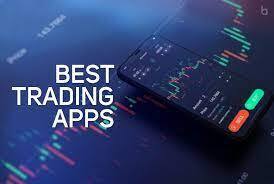Trading apps are shaking up the investment world, giving everyday people the tools to trade on the go. But are they worth the hype? Let’s dive into what makes these apps tick and why they’re changing how we invest.
What Are Trading Apps?
Simply put, trading apps are software applications designed to help users buy, sell, and manage financial assets like stocks, ETFs, cryptocurrencies, and more—straight from their mobile devices. They’ve made the process of investing more accessible than ever.
How Do They Work?
Trading apps connect users to stock markets and exchanges through intuitive interfaces. With just a few taps, you can open an account, deposit funds, and start trading. Whether you’re a day trader or a long-term investor, these apps cater to different strategies.
Key Features
Modern trading apps pack a punch with features like:
- Real-time market data
- Customizable alerts
- In-app tutorials
- Portfolio tracking
- Advanced charting tools
These features make it easier for users to stay informed and execute trades efficiently.
Benefits of Using Trading Apps
These apps aren’t just trendy—they’re genuinely convenient. Here’s why they’ve captured the attention of millions worldwide.
Accessibility
With a smartphone and internet connection, you can trade from virtually anywhere. Whether you’re in line at the coffee shop or lounging at home, trading apps let you seize opportunities as they arise.
Cost-Effectiveness
Many apps, like Robinhood, have slashed fees and commissions, making it cheaper for users to get started. Why pay extra when you can keep more of your profits?
User-Friendly Interfaces
Most trading apps are designed with simplicity in mind. Whether you’re a seasoned investor or a newbie, the intuitive layouts and guided processes ensure you won’t feel overwhelmed.
Popular Trading Apps in the Market
With dozens of options, finding the right app can be overwhelming. Here’s a quick snapshot of some of the top players:
Robinhood
Known for commission-free trades, Robinhood revolutionized the industry. It’s especially popular among beginners for its straightforward interface and extensive range of tradable assets.
eToro
A leader in social trading, eToro allows users to mimic the trades of successful investors. It’s perfect if you’re new to trading and want guidance from experts.
Fidelity Investments
Offering advanced tools and a reputation for reliability, Fidelity caters to both casual and serious investors. Their research and educational resources are top-notch.
Things to Consider Before Choosing a Trading App
Not all apps are created equal. Here’s what to keep in mind before downloading one:
Security Measures
Always prioritize apps with robust encryption and two-factor authentication. You’re dealing with your money, so safety is non-negotiable.
Fees and Commissions
While many apps offer commission-free trades, others may charge for certain features or premium accounts. Make sure to read the fine print.
Available Features
Ensure the app aligns with your trading goals. Are you looking for real-time alerts, in-depth analysis tools, or beginner-friendly guides?
The Future of Trading Apps
Trading apps continue to evolve, bringing exciting innovations to the table. Here’s what we can expect in the coming years:
AI Integration
Artificial intelligence is already making waves in trading. Soon, apps will use AI to provide predictive analytics, helping users make smarter decisions.
Expanded Accessibility
As internet access grows globally, apps will reach even the most remote areas, enabling more people to invest.
Gamification Features
Trading apps are starting to feel more like games, with leaderboards, achievements, and interactive tutorials. These features make learning to trade engaging and fun.
Final Thoughts
Trading apps have democratized investing, putting the power of Wall Street into the palm of your hand. But as with any tool, success depends on how you use it. Do your research, choose the app that fits your needs, and start small if you’re a beginner. Ready to start trading? Your journey awaits!

